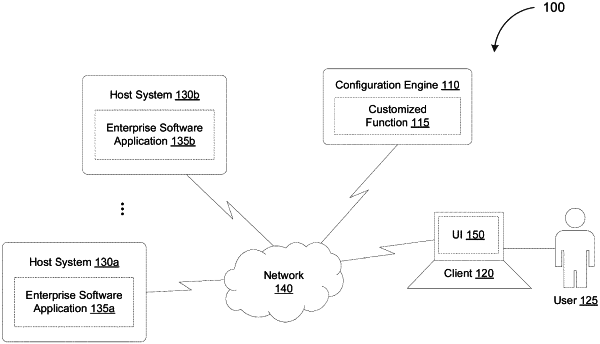| CPC G06Q 10/06311 (2013.01) [G06Q 10/06398 (2013.01); G06Q 10/1091 (2013.01)] | 16 Claims |

|
1. A system, comprising:
at least one data processor; and
at least one memory storing instructions, which when executed by the at least one data processor, result in operations comprising:
receiving, at a configuration engine, one or more inputs for generating a customized function whose performance requires a first software application to perform a first subprocess and a second software application to perform a second subprocess, the first software application being deployed at a first host system and operating on a first database table having a first column, and the second software application being deployed at a second host system and operating on a second database table having a second column mapped to the first column in order to accomplish the customized function;
applying, based at least on the one or more inputs, a first customization to a first template associated with the first software application to change a first manner in which data is stored in the first database table operated upon by the first software application performing the first subprocess;
applying, based at least on the one or more inputs, a second customization to a second template associated with the second software application to change a second manner in which data is stored in the second database table operated upon by the second software application performing the second subprocess;
staging, at the configuration engine, the customized function to at least determine a compatibility between the first customization applied to the first software application and the second customization applied to the second software application; and
upon determining that the first customization applied to the first software application is compatible with the second customization applied to the second software application, implementing the customized function by at least sending, to the first host system of the first software application, the first template having the first customization and sending, to the second host system of the second software application, the second template having the second customization.
|